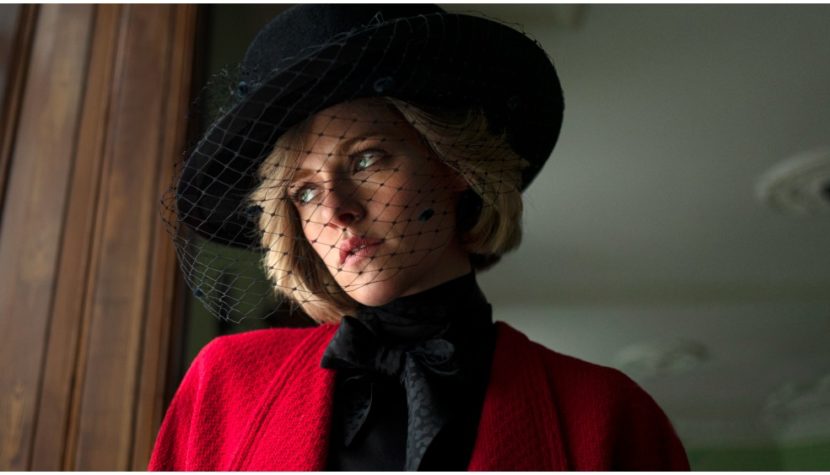SPENCER. Great Kristen Stewart as PRINCESS DIANA

Pablo Larraín’s passion for the tragic biographies of iconic women – known, widely liked and unhappy – once again materialized in the form of a film. After the tragic story of Jackie Kennedy, filmed in 2016, he decided to focus on the “queen of human hearts”, Princess Diana, a character so transformed by pop culture that it would seem that nothing new can be said about her life. And yet.
Larraín very rightly decided not to cover the entire biography of Princess Diana (no one would want to compete with the great The Crown). Like Oliver Hirschbiegel and Stephen Jeffreys, director and writer of 2013’s mediocre Diana starring Naomi Watts, Pablo Larraín and writer Steven Knight (Peaky Blinders, Locke) bring to the screen a brief but groundbreaking episode in Diana’s life – three Christmas days in December 1991.
Although the marriage of Diana (Kristen Stewart) and Charles (Jack Farthing) was already in disarray and the Duchess’s relationship with the Windsor family was very tense, she spent Christmas at Sandringham House, one of the private residences of the royal family. The camera follows Diana’s three-day festivities marked by military rigor and uncompromising court etiquette. After arriving at the palace, each family member must weigh themselves, and there are no exceptions for anyone, even for a bulimic princess. The rhythm of the day is determined by subsequent meals and new outfits, because a specific outfit has already been selected for Diana for each part of the day. Every step of the way, the woman meets control, which, at the behest of the Queen and Charles, is exercised by servants personified by uniformly dressed maids and dressers and a former military man with a stern, impenetrable expression on his face (Timothy Spall). Persistent knocking on the door and constant urging for the next of many meals, sewing up the curtains so that no photojournalist could accidentally photograph the Princess changing, is Diana’s everyday life. To make matters worse, her husband’s romance is going great, and as a Christmas gift, she gets the same pearls that his lover received. Infidelity, lack of privacy, feeling trapped and being constantly judged result in compulsive overeating, frequent vomiting and self-mutilation.

It is the figure of the Princess and her gradually deteriorating mental state during the three-day holiday with the Windsors that are the focus of Larraín’s attention. Frequent close-ups of Kristen Stewart’s face and a blurred background, through which we can’t even see other family members during the first dinner, intensify the emotions and increase the heroine’s sense of loneliness. This procedure also deepens the dark, disturbing and paranoid atmosphere of the film, which, thanks to the great jazz music of Johnny Greenwood, at times looks like a thriller, a kind of dark fairy tale. The misty surroundings of Sandringham House and Diana’s dilapidated childhood home nearby would be more appropriate for a horror film than a biographical drama. Moreover, Larraín’s film does not lack very strong scenes during which Diana struggles with paranoid visions. A parallel to the fate of the duchess is the story of Anne Boleyn (Amy Manson) – the mistress and then wife of Henry VIII, killed by him so that he could enjoy the next one.
Related:
Stewart herself finds herself perfectly in Larraín’s convention. Her acting manner so far, which could irritate many, surprisingly blurs in a great performance as Diana. Thanks to the make-up and great costumes in the style of the 90s, Stewart not only looks like a duchess, but also walks and talks like one. A slightly bowed head, a gentle voice, a shy smile and a gentle gaze reserved for the world beyond the door of her apartment, where Queen Victoria once lived, change into pursed, quivering lips and a pained look of eyes wet from crying. The Princess swears profusely, goes berserk, cuts herself with pruning shears, dances, plays carelessly with her sons – Diana in Stewart’s creation and Larraín’s concept is human, multidimensional, stripped of the legend of the great Lady Di.
Larraín tells a familiar story in a completely new way. Avoiding the typical biopic, he tells a rather dark story about a lost woman who tries to put herself and her life back together. Thanks to giving this well-known story the characteristics of genre cinema, the film also gains a universal dimension, and Spencer, as the title suggests, is primarily a story about searching for one’s own identity, becoming oneself by abandoning a difficult future and accepting it at the same time, symbolized not only by returning to his maiden names.





